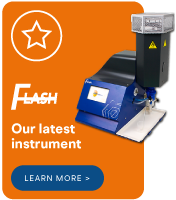Epstein, M.S. & Rush, T.A. ‘The Determination of Low Concentrations of Sodium in Cement by Flame Emission Spectrometry without Sample Preparation’, Appl. Spectroscopy, 45 (1991), p. 1568-1570.
U.S Naval Civil Engineering Laboratory (1964). Port Hume, California: US NAVY. 26.
This method allows the direct measurement of low levels of sodium without prior extraction procedures, which minimises possible sources of contamination.
Procedure
The polyethylene bottles to be used for sample preparation are first soaked in 20% v/v HNO3 for 24 hours, rinsed with distilled-deionised water and dried in a clean atmosphere. Diluent Solution: 0.01% glycerol in 5% HNO3.
Sample preparation
The cement sample is dried in a vacuum desiccator or 70 centigrade holding oven for 24 hours prior to sample preparation. Using a mortar and pestle, the cement sample was ground to a fine powder and passed through a graduated mesh. It is imperative that if the cement sample contained larger materials such as rock fragments that these were not ground into the homogeneous mixture. This is due to the analysis of ionic content being based on the binding properties of the cement, not the larger rock shards that hold this binding material.
Representative cement samples weighing from 1 to 30mg are placed in 25ml polyethylene bottles and 10ml of the glycerol diluent is added to each of the bottles. The sample solution is then shaken for 30 minutes, the addition of acid will result in fizzing from the release of carbon dioxide from the carbonates present in cement samples, appropriate measures should be taken to avoid spillage of nitric acid from this.
Standards are prepared in the glycerol/nitric stock solution from concentrated aqueous stock solutions such as the 10000mg/l stock solutions supplied from BWB-Tech.
To estimate the range of standards that should be used for analysis, the BWB Technologies Flame Photometer offers a single point calibration which should be ran with a 100mg/l-1 standard.
Preparation of Standard Graph
Set the flame photometer in accordance to MultiPoint/Single Ion Calibration found on page 24 of the BWB Technologies Installation and Operation Manual, to measure potassium emission. Nebulise the working standard solutions and adjust the controls until steady zero and maximum readings are obtained. Nebulise the intermediate working standard solutions and construct a graph relating raw emission data (known as RAW in BWB the flame photometer) to concentration of all the standard solutions.



